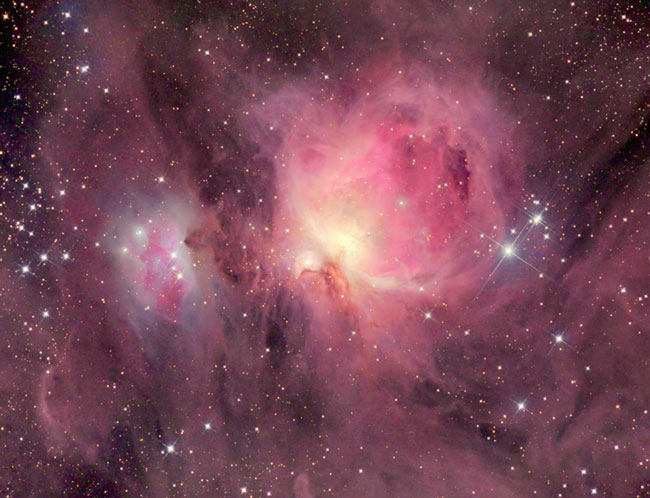

STAGES OF EVOLUTION
Formation of stars can be generally described in four stages that span the time line within a molecular cloud. Once the star is freed from the dust it will be surrounded by a circumstellar disk of material from which it was made of. Sometime in the future the disk will develop forming planets and beginnings of a solar system.
- Molecular cloud cores are formed with the help of a magnetic field which interacts only with charged particles inside a moleular cloud called ions. Neutral particles which make most of the mass of the cloud in turn interact with the ions. These interactions occur through a frictional force that depends on the relative motion between the ions and the neutrals. The important physical aspect of this process (ambipolar diffusion) is that the ions along with the magnetic field are slowly moving outward as the neutral component is moving inward and contracting because of gravity.
- Cloud cores are concentrated to the center which has a much higher density than the outer parts. The cores gain uniform rotation and their concentrated spin along with gaining of mass leads to protostellar collapse. A protostar is an object which is still gaining mass through infall of material and is formed from an inside-out collapse of the core.
- Transition occurs when a protostar changes into a visible star, and this phase begins with bipolar outflow. The outflow is generated by a stong magnetic field that rotates with the star and forces ionized gas to flow outward, and this becomes a centifugally driven disk wind.
- The wind eventually separates the star system from the infalling material which forms into a circumstellar disk. In the future this diskcan form into a solar system.


Image
credits: J. Hester and P. Scowen (Arizona State University), and NASA.
M42:
Wisps of the Orion Nebula
Credit & Copyright: John P. Gleason (Celestial Images)
Credit & Copyright: John P. Gleason (Celestial Images)
In
the Center of the Lagoon Nebula
Credit: A. Caulet (ST-ECF, ESA), NASA
Credit: A. Caulet (ST-ECF, ESA), NASA
